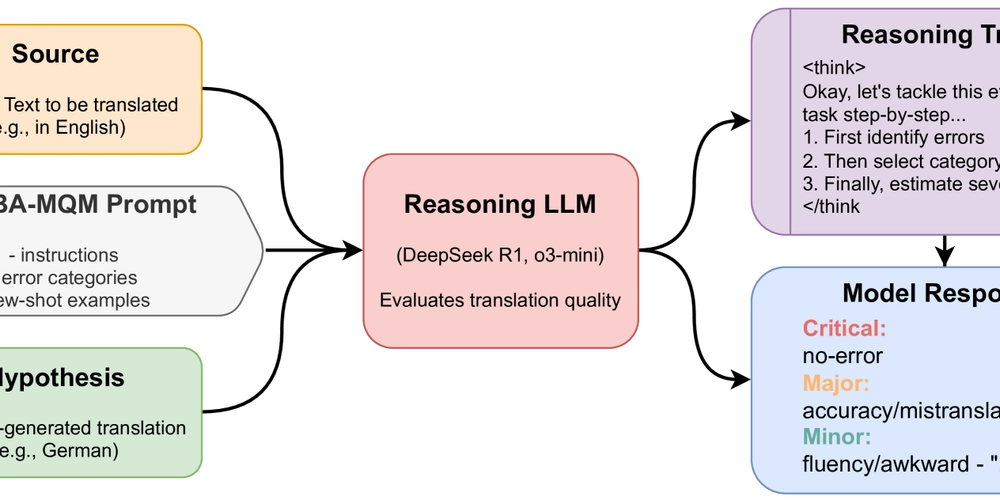LLM Hallucination Detection: Keeping AI Agents Reliable in Customer Service
AI agents have revolutionized how businesses handle customer service, but they come with a significant challenge: hallucinations. When AI systems generate content that's incorrect, irrelevant, or inappropriate, it can damage customer trust and your brand reputation. The Hallucination Problem Large language models (LLMs) are trained on vast datasets from to generate text, answer questions, and automate tasks. While powerful, they're prone to "hallucinating" - generating responses that: Contain false information that sounds plausible Drift off-topic from the customer's question Use inappropriate language or tone Make up facts or details that don't exist These issues can lead to serious consequences, as seen with Air Canada (fined for chatbot misinformation about refund policies) and NEDA (whose AI gave harmful weight loss advice). Three Steps to Detect and Prevent Hallucinations To maintain reliable AI agents, Customer Care Executives need a systematic approach: 1. Define Your Testing Parameters Start by identifying which AI agents handle critical customer communications. Build a comprehensive Knowledge Base from internal documentation to ground responses in accurate information. Set clear accuracy thresholds and validation rules aligned with your business standards. 2. Simulate Real-World Scenarios Test your AI agents against diverse customer scenarios across different: Languages Industry-specific questions Customer personas Edge cases This simulation helps catch when an agent drifts off-topic, hallucinates details, or violates compliance rules before these issues affect real customers. 3. Monitor Performance Over Time Regular monitoring is crucial as LLMs can change behavior over time. Implement: One-time audits for periodic checks Continuous monitoring for critical systems Detailed reporting that identifies specific problem areas Clear remediation steps when issues are found Advanced Techniques for Better Detection As your AI implementation matures, consider these more sophisticated approaches: Confidence checks: Analyze how confident the AI is in its own responses Response comparison: Compare replies against known facts or reference answers Self-verification: Ask the same question in different ways to test consistency Prompt engineering: Refine how questions are framed to guide the AI toward accuracy Building Trust Through Reliable AI Implementing hallucination detection isn't just about avoiding errors—it's about building sustainable trust in your AI systems. When customers can rely on accurate, helpful responses from your AI agents, they're more likely to engage with automated solutions. For developers, this means: Creating verification systems into your AI pipelines Building comprehensive test suites for AI responses Implementing human-in-the-loop workflows for edge cases Developing robust monitoring tools that can scale with your deployment Getting Started You don't need to build complex systems from scratch. Tools like Genezio simplify LLM hallucination detection with: Real-time AI testing Ongoing monitoring capabilities Industry-specific validation standards Actionable reporting Comprehensive simulation tools Whether you're just beginning to deploy AI agents or scaling existing systems, implementing proper hallucination detection should be a non-negotiable part of your development pipeline. What challenges have you faced with AI hallucinations in your projects? Share your experiences in the comments!

AI agents have revolutionized how businesses handle customer service, but they come with a significant challenge: hallucinations. When AI systems generate content that's incorrect, irrelevant, or inappropriate, it can damage customer trust and your brand reputation.
The Hallucination Problem
Large language models (LLMs) are trained on vast datasets from to generate text, answer questions, and automate tasks. While powerful, they're prone to "hallucinating" - generating responses that:
- Contain false information that sounds plausible
- Drift off-topic from the customer's question
- Use inappropriate language or tone
- Make up facts or details that don't exist
These issues can lead to serious consequences, as seen with Air Canada (fined for chatbot misinformation about refund policies) and NEDA (whose AI gave harmful weight loss advice).
Three Steps to Detect and Prevent Hallucinations
To maintain reliable AI agents, Customer Care Executives need a systematic approach:
1. Define Your Testing Parameters
Start by identifying which AI agents handle critical customer communications. Build a comprehensive Knowledge Base from internal documentation to ground responses in accurate information. Set clear accuracy thresholds and validation rules aligned with your business standards.
2. Simulate Real-World Scenarios
Test your AI agents against diverse customer scenarios across different:
- Languages
- Industry-specific questions
- Customer personas
- Edge cases
This simulation helps catch when an agent drifts off-topic, hallucinates details, or violates compliance rules before these issues affect real customers.
3. Monitor Performance Over Time
Regular monitoring is crucial as LLMs can change behavior over time. Implement:
- One-time audits for periodic checks
- Continuous monitoring for critical systems
- Detailed reporting that identifies specific problem areas
- Clear remediation steps when issues are found
Advanced Techniques for Better Detection
As your AI implementation matures, consider these more sophisticated approaches:
- Confidence checks: Analyze how confident the AI is in its own responses
- Response comparison: Compare replies against known facts or reference answers
- Self-verification: Ask the same question in different ways to test consistency
- Prompt engineering: Refine how questions are framed to guide the AI toward accuracy
Building Trust Through Reliable AI
Implementing hallucination detection isn't just about avoiding errors—it's about building sustainable trust in your AI systems. When customers can rely on accurate, helpful responses from your AI agents, they're more likely to engage with automated solutions.
For developers, this means:
- Creating verification systems into your AI pipelines
- Building comprehensive test suites for AI responses
- Implementing human-in-the-loop workflows for edge cases
- Developing robust monitoring tools that can scale with your deployment
Getting Started
You don't need to build complex systems from scratch. Tools like Genezio simplify LLM hallucination detection with:
- Real-time AI testing
- Ongoing monitoring capabilities
- Industry-specific validation standards
- Actionable reporting
- Comprehensive simulation tools
Whether you're just beginning to deploy AI agents or scaling existing systems, implementing proper hallucination detection should be a non-negotiable part of your development pipeline.
What challenges have you faced with AI hallucinations in your projects? Share your experiences in the comments!











































































































































































![[The AI Show Episode 144]: ChatGPT’s New Memory, Shopify CEO’s Leaked “AI First” Memo, Google Cloud Next Releases, o3 and o4-mini Coming Soon & Llama 4’s Rocky Launch](https://www.marketingaiinstitute.com/hubfs/ep%20144%20cover.png)










































































































































































































![GrandChase tier list of the best characters available [April 2025]](https://media.pocketgamer.com/artwork/na-33057-1637756796/grandchase-ios-android-3rd-anniversary.jpg?#)










































.png?width=1920&height=1920&fit=bounds&quality=70&format=jpg&auto=webp#)


























.webp?#)































































































![Foldable e-ink readers are a thing now [Gallery]](https://i0.wp.com/9to5google.com/wp-content/uploads/sites/4/2025/04/mooink-v-foldable-e-ink-1.jpg?resize=1200%2C628&quality=82&strip=all&ssl=1)










![New Beats USB-C Charging Cables Now Available on Amazon [Video]](https://www.iclarified.com/images/news/97060/97060/97060-640.jpg)

![Apple M4 13-inch iPad Pro On Sale for $200 Off [Deal]](https://www.iclarified.com/images/news/97056/97056/97056-640.jpg)





































































































































![✨ [11] - Build a Messages Screen in React Native Expo](https://media2.dev.to/dynamic/image/width%3D1000,height%3D500,fit%3Dcover,gravity%3Dauto,format%3Dauto/https:%2F%2Fdev-to-uploads.s3.amazonaws.com%2Fuploads%2Farticles%2Favictotnfv40brvxrsmc.png)
